- Home
- Trend
- Weight Loss Strategies
- Acne Tips
- Hair Health Information
- Blemish Removal Tips
- Acne Scar Removal Tips
- Muscle Building Techniques
- Intimate Care Tips
- Postpartum Intimate Care
- Eye Bags Wiki
- Tips for Face Slimming
- Secret of Permanent Hair Removal
- Breast Enlargement Tips
- Cure to Snoring
- Marionette Lines
- Skin-Tightening Secrets
Uneven skin tone and hyperpigmentation are growing concerns for many. While achieving a flawless complexion requires a multi-pronged approach, sun protection remains the ultimate non-negotiable. This article explores how sun damage fuels pigmentation and empowers you to choose the right sunscreen for a radiant, even-toned visage.
Understanding Pigmentation and Sun Damage: Unveiling the Mystery Behind Dark Spots
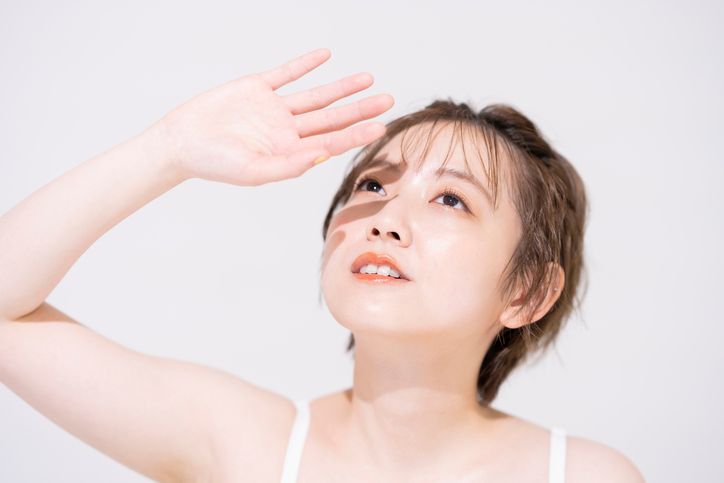
Our skin's beautiful tapestry of colour comes from a pigment called melanin. Melanin production is a natural process triggered by the sun's ultraviolet (UV) rays. However, sometimes this process goes awry, leading to uneven pigmentation and the formation of dark spots. Let's delve deeper into the science behind sun damage and hyperpigmentation.
The Sun's Sneaky Rays: UVA and UVB
Our skin's colour variation is a result of melanin production, a natural process triggered by exposure to the sun's ultraviolet (UV) rays. Melanin acts as our skin's natural defence against UV damage by absorbing and dissipating UV radiation. However, prolonged or excessive sun exposure can lead to an imbalance in melanin production, resulting in uneven pigmentation and the appearance of dark spots or patches on the skin. Sunlight emits two types of UV rays that impact our skin differently:
• UVA Rays: These rays have a longer wavelength and penetrate deep into the skin's dermal layers. UVA rays are associated with premature ageing, including wrinkles, fine lines, and sagging skin, as they contribute to the breakdown of collagen and elastin. Additionally, UVA rays play a significant role in the development of hyperpigmentation and dark spots by stimulating melanocytes (melanin-producing cells) in the basal layer of the epidermis.
• UVB Rays: These rays have a shorter wavelength and primarily affect the skin's surface layers, causing sunburns and triggering immediate melanin production in the epidermis. UVB rays are also responsible for the visible signs of sun damage, such as redness, peeling, and inflammation. Over time, repeated exposure to UVB rays can lead to the formation of age spots, freckles, and other forms of hyperpigmentation.
Melanin: Our Skin's Natural Defense, But Sometimes a Double Agent
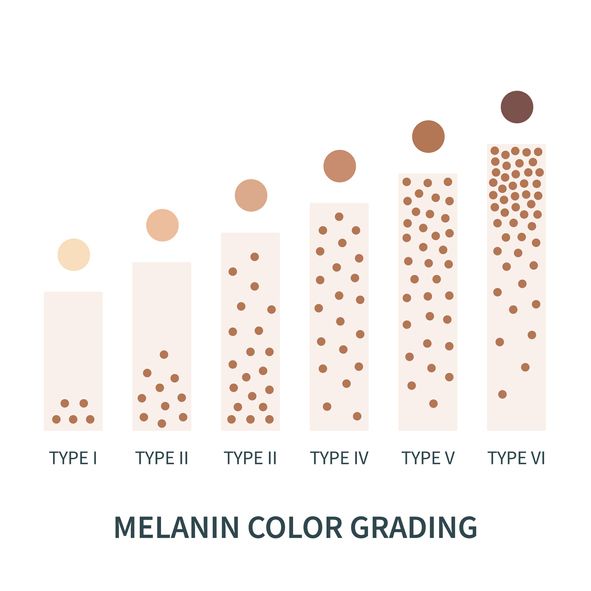
Melanin acts as our skin's natural defence mechanism against UV rays. When exposed to sunlight, melanocytes (skin cells) produce more melanin, creating a tan. This tan acts like a shield, absorbing UV radiation and protecting deeper skin layers.
What Happens When Melanin Overreacts?
However, sometimes melanin production goes into overdrive. This can happen due to various factors, including:
• Excessive Sun Exposure: Overexposure to UV rays can overwhelm melanocytes, leading to uneven melanin distribution and the formation of dark spots.
• Hormonal Changes: Fluctuations in oestrogen and progesterone during pregnancy, menstruation, or birth control use can trigger hyperpigmentation, especially melasma (often appearing as "pregnancy mask").
• Skin Injuries: Inflammation after acne, cuts, or burns can lead to post-inflammatory hyperpigmentation (PIH).
免費體驗
PicoCure Pigmentation Removal Treatment
1 Minute Self-Registration
Date should not be before minimal date
The Many Faces of Hyperpigmentation
Uneven pigmentation manifests in various ways, each with its own story:
Age Spots
These flat, brown spots often appear on sun-exposed areas like the face, hands, and arms due to accumulated sun damage over time.
Sun Spots
These darker, well-defined spots are directly linked to sun exposure.
Melasma
This patchy, brown discoloration typically appears on the face, forehead, and cheeks, often triggered by hormonal changes.
Post-inflammatory Hyperpigmentation (PIH)
These dark spots can develop after acne breakouts, cuts, or other skin injuries.
The Relationship Between Sunscreen and SPF
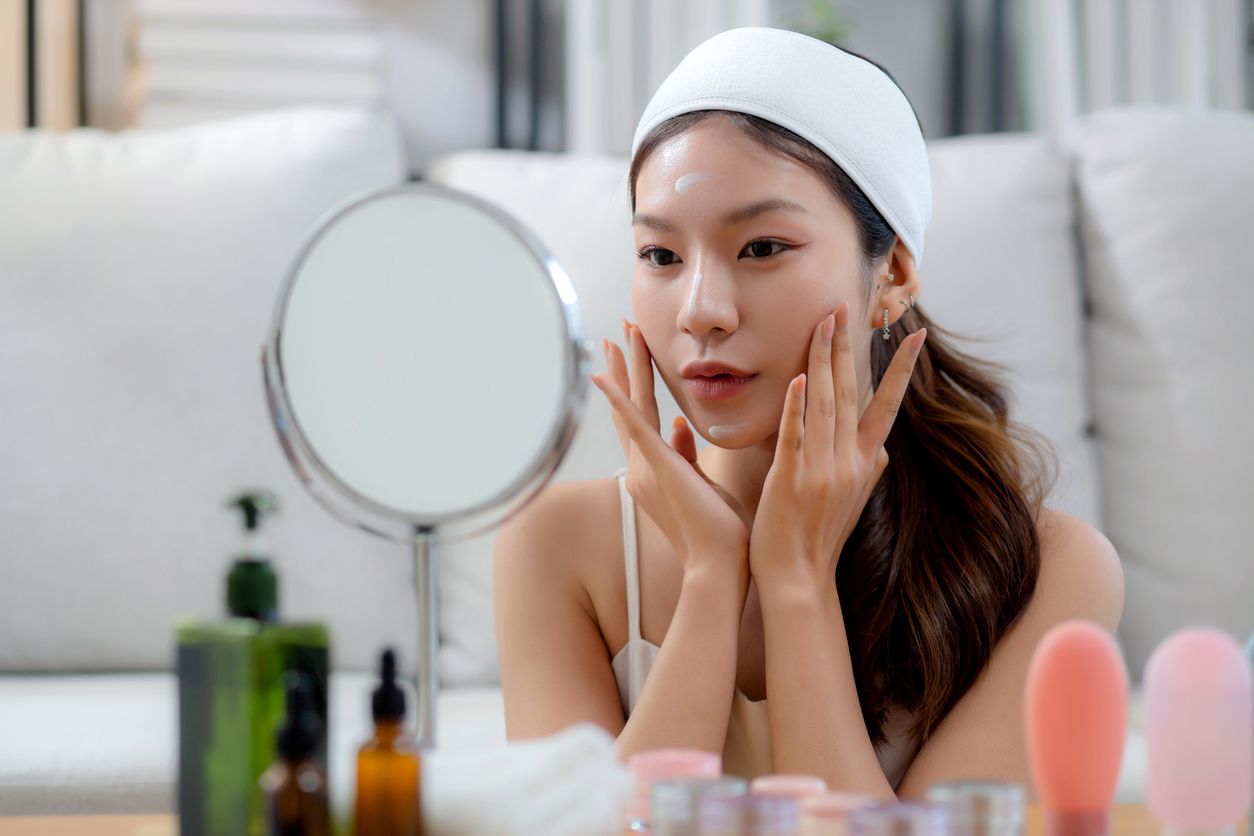
Sun protection factor (SPF) might seem like a confusing number on a sunscreen bottle, but it plays a crucial role in safeguarding your skin from harmful ultraviolet (UV) rays.
SPF is a numerical rating system that indicates a sunscreen's effectiveness in blocking UVB rays. These rays are the primary culprit behind sunburns, premature ageing, and even skin cancer. Here's how different SPF levels translate to protection:
• SPF 30: This provides a good baseline for daily protection. It blocks about 97% of UVB rays, meaning only 3% can penetrate your skin. While effective for most daily activities, it might not be enough for extended sun exposure or those with fair skin.
• SPF 50: This level offers a significant increase in UVB protection, blocking about 98% of UVB rays. It's ideal for situations where you'll be exposed to the sun for extended periods, like spending a day at the beach, or for individuals with fair skin that burns easily.
Beyond Sunburn Prevention: Sunscreen's Multifaceted Benefits
Sure, preventing sunburn is a primary function of sunscreen, but its benefits extend far beyond a day at the beach. Consistent sunscreen use acts as a daily defence system, safeguarding your skin's health and promoting a youthful, even-toned complexion. Let's explore the multifaceted benefits of incorporating sunscreen into your routine:
1. Shields Against Uneven Skin Tone
Sun exposure is a major trigger for hyperpigmentation, the development of dark spots and age spots. UVA and UVB rays stimulate melanin production, the pigment that determines skin color. When melanin production goes into overdrive, it can lead to uneven pigmentation. Sunscreen acts as a shield, absorbing or reflecting UV rays before they can wreak havoc on your skin. This consistent protection helps regulate melanin production, preventing the formation of dark spots and maintaining a more even skin tone.
2. Fights the Signs of Aging
Think of sunscreen as an anti-aging warrior. UVA rays, the sneaky culprits that penetrate deep into the skin, are responsible for premature ageing, wrinkles, and the breakdown of collagen (the protein responsible for youthful skin structure). By deflecting these harmful rays, sunscreen helps maintain skin elasticity, minimise the appearance of wrinkles, and preserve a youthful, radiant glow.
3. Your Ally in Skin Cancer Prevention
Sun exposure is a major risk factor for skin cancer. The good news? Daily sunscreen use significantly reduces this risk. Sunscreen acts as a barrier, filtering out harmful UV rays that can damage skin cells and potentially lead to cancer development. By incorporating sunscreen into your daily routine, you're taking a proactive step towards safeguarding your skin's health for years to come.
免費體驗
PicoCure Pigmentation Removal Treatment
1 Minute Self-Registration
Date should not be before minimal date
Choosing the Right Sunscreen for Sensitive Skin and Pigmentation
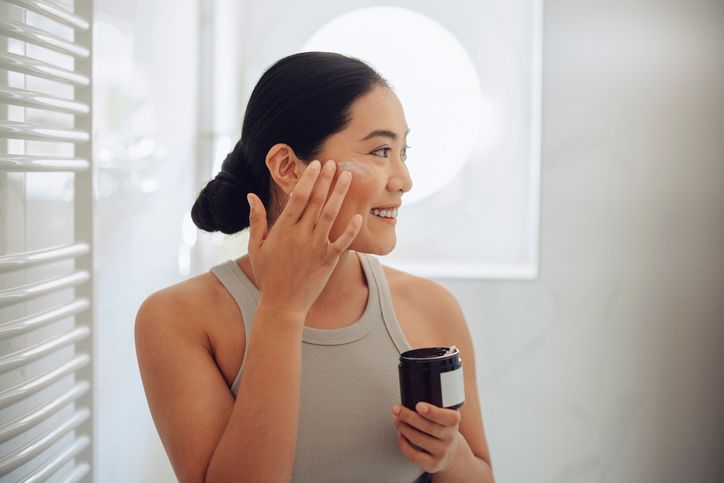
For those with sensitive skin or concerns about hyperpigmentation, mineral sunscreens are often the gentlest choice. These sunscreens contain physical blockers like zinc oxide and titanium dioxide, which sit on the surface of the skin, deflecting UV rays. Chemical sunscreens, while effective, can sometimes irritate sensitive skin.
Mineral vs. Synthetic Sunscreens
Sunscreen is your daily defence against harmful UV rays, but with two main types – mineral and synthetic – choosing the right one can feel confusing. Let's break down the key differences to help you select the perfect sunscreen for your needs:
• Mineral Sunscreens (Physical Sunscreens): These sunscreens sit on the surface of your skin, acting like a physical shield. They contain mineral ingredients like zinc oxide or titanium dioxide, which reflect and scatter UV rays away from the skin, preventing them from penetrating deeper layers.
• Synthetic Sunscreens (Chemical Sunscreens): These sunscreens work differently. They contain organic compounds like oxybenzone, avobenzone, or octinoxate. These chemicals absorb UV rays and convert them into heat, which is then released from the skin.
Choosing Your Sunscreen Champion: Benefits and Considerations
Mineral Sunscreens Pros
• Gentler on sensitive skin, less likely to cause irritation.
• Broad spectrum protection against UVA and UVB rays (look for "zinc oxide" or "titanium dioxide" as the first ingredients).
• Starts working immediately upon application.
• Safe for all skin tones, as they don't leave a white cast. (New formulations minimise white cast, but it's a consideration).
Mineral Sunscreens Cons
• May feel thicker and leave a white cast on the skin (although newer formulas are lighter).
• May need to be reapplied more frequently due to rubbing or sweating.
Synthetic Sunscreens Pros
• Often lighter and feel less greasy on the skin.
• May be more water-resistant.
Synthetic Sunscreens Cons
• May irritate sensitive skin.
• Some ingredients may raise concerns about potential hormonal disruption (ongoing research).
• May take 15-30 minutes to become fully effective after application.
Sunscreen Ingredients and Features to Consider
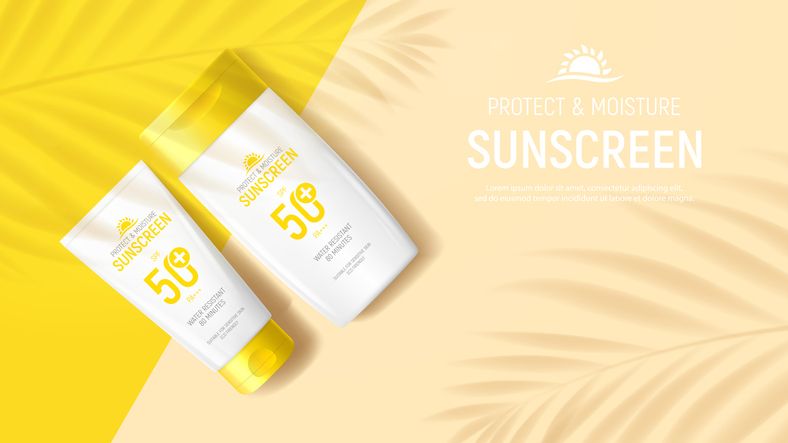
Sunscreen is your daily defence against sun damage, but with so many options on the shelf, choosing the right one can feel overwhelming. After understanding the different between mineral sunscreen and synthetic ones, here's a breakdown of key features to consider for optimal sun protection:
• Non-Comedogenic: This label indicates the sunscreen won't clog pores. It's ideal for acne-prone skin, as clogged pores can lead to breakouts.
• Tinted Pigments: Some sunscreens offer a hint of colour, providing light coverage alongside sun protection. This can be a great option for those who want to even out skin tone without a separate foundation.
• Water Resistance: If you sweat frequently or enjoy outdoor activities, opt for a water-resistant sunscreen. These formulas stay effective even after swimming or sweating, but reapplication is still crucial after extended periods in the water or vigorous activity.
Sunscreen Application for Optimal Results
Remember, sunscreen is a daily essential, even on cloudy days. Apply generously to all exposed areas, including your face, neck, ears, and lips. Don't forget the tops of your feet and the backs of your hands! Reapplication is key – every two hours, or more often if swimming or sweating.
免費體驗
PicoCure Pigmentation Removal Treatment
1 Minute Self-Registration
Date should not be before minimal date
The Final Round: Selecting Your Sunscreen
The best sunscreen is the one you'll wear consistently! Consider your skin type, preferences, and activities when making your choice. Here's a quick guide:
• Sensitive Skin: Opt for mineral sunscreen with zinc oxide or titanium dioxide.
• Active Lifestyle: Choose a water-resistant, broad-spectrum sunscreen, either mineral or synthetic depending on your preference.
• Concerned About White Cast: Look for newer, lightweight mineral sunscreens or choose a sheer synthetic formula.
Remember: Regardless of the type, ensure your sunscreen is:
• Broad-spectrum SPF 30 or higher: Provides protection against UVA and UVB rays.
• Non-comedogenic: Won't clog pores.
• Water-resistant (if needed for your activities).
2 Advanced Solutions to Tackle Your Stubborn Pigmentations
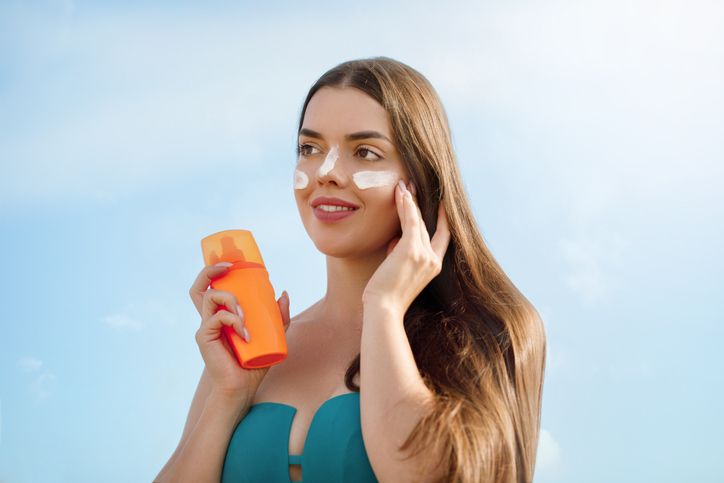
Sunscreen is a preventative measure, not a magic eraser. For existing dark spots, consider other options like additional treatments like topical creams can significantly improve overall results. As such, ## Unveiling Flawless Skin: Beyond Sunscreen and How Perfect Medical Can Help
Sunscreen is your daily shield against sun damage, but sometimes, stubborn pigmentation issues require a more targeted approach. Perfect Medical offers a range of advanced treatments that can complement your sunscreen routine and help you achieve a radiant, even-toned complexion.
1. Chemical Peels: A Gentle Exfoliating Solution
Chemical peels utilise alpha hydroxy acids (AHAs) or beta hydroxy acids (BHAs) to gently remove the outer layer of your skin. This process reveals smoother, more even-toned skin underneath, effectively lightening pigmented spots and improving overall texture. Chemical peels are a great option for mild to moderate pigmentation concerns, working synergistically with your sunscreen to prevent further damage while addressing existing issues.
2. PicoWay Laser Treatment: Shattering Pigmentation for Lasting Results
For persistent pigmentation concerns, consider the revolutionary PicoWay Picosecond Laser Treatment. Unlike traditional lasers, PicoWay utilises ultra-short bursts of energy to shatter melanin particles within the skin. Your body then naturally eliminates these fragments, leading to a visible reduction in dark spots, age spots, and uneven pigmentation.
Experience a comfortable, non-invasive treatment with minimal downtime. PicoWay precisely targets specific pigmented areas without affecting surrounding healthy skin, minimising the risk of rebound pigmentation and ensuring a more even and radiant complexion. At Perfect Medical, we take a comprehensive approach to address your unique needs. Our journey begins with a:
• Professional Skin Analysis: Our experts will meticulously analyse your skin type and pigmentation concerns to recommend the ideal treatment plan. This plan may involve a combination of sunscreen use with either chemical peels or PicoWay laser therapy, creating a customised roadmap to your desired results.
• Habit Review: We'll discuss your daily routines to identify any internal or external factors that might be contributing to pigmentation. This collaborative approach helps us determine the optimal treatment frequency for achieving your goals.
• Preparation and Treatment: Before your chosen treatment (chemical peel or PicoWay laser), we'll provide a thorough explanation of the procedure and cleanse your skin.
• Follow-Up Care: Post-treatment, we'll clean your skin again, discuss aftercare details, and schedule follow-up appointments to ensure you experience optimal results throughout your journey.
免費體驗
PicoCure Pigmentation Removal Treatment
1 Minute Self-Registration
Date should not be before minimal date
FAQ

1. What are the different skin types, and how does sunscreen protect against harmful UV rays?
Sunscreen products are usually specifically designed for various skin types, including sensitive skin, oily skin, and dry skin. Their formulations include broad-spectrum protection to absorb harmful UV rays, protecting the skin from sun damage and premature ageing.
2. How does wearing sunscreen with UVB protection help prevent skin damage from visible light?
Sunscreens with UVB protection not only shield the skin from UVB rays but also provide some defence against visible light. This helps reduce the risk of skin damage caused by visible light, including hyperpigmentation and premature ageing.
3. Can combining sunscreen with skincare products enhance UV protection for different skin types?
Yes, combining sunscreen with their skincare products can enhance UV protection tailored to specific skin types. For example, using a moisturiser with SPF during the day can complement sunscreen application, providing added protection against UV rays for dry or sensitive skin.
4. What are the benefits of sunscreen in protecting against both UVB rays and visible light?
Most sunscreens on market offer broad-spectrum protection, guarding against UVB rays that cause sunburn and visible light that contributes to skin damage and ageing. This dual protection helps maintain skin health and prevent various skin concerns.
5. Is the famous La Roche-Posay good? How does their sunscreen cater to different skin types while ensuring effective UV protection?
La Roche-Posay formulates sunscreens with various textures and ingredients suitable for different skin types, such as lightweight formulas for oily skin and moisturising options for dry skin. Despite these differences, all their sunscreens provide reliable UV protection to keep the skin safe from sun damage.









